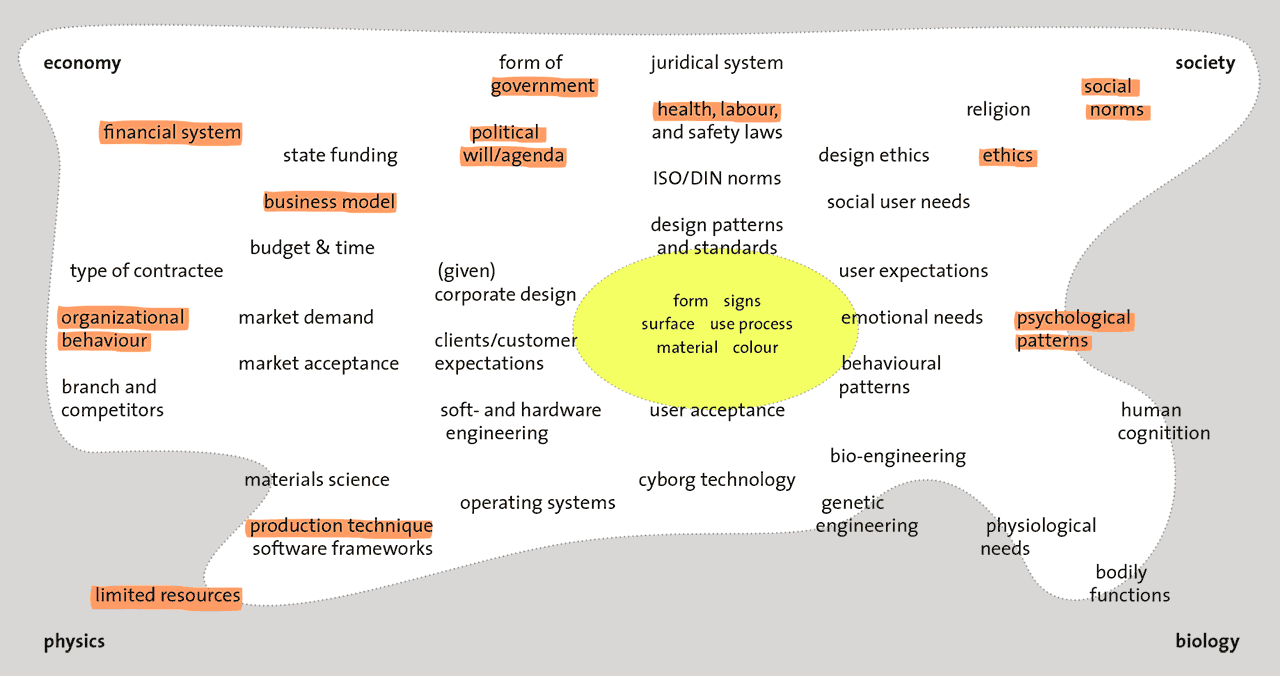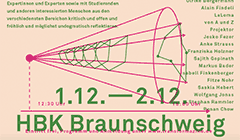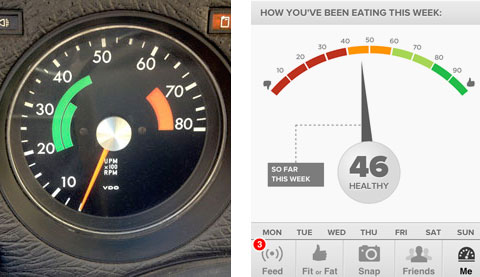Design, Ethik und Politik
Texte und Vorträge

Narrow design space (yellow), surrounded by alleged constraints, too distant to the location of global problems (orange). In contrast: The big area that is by principle subject to change (white) – by evolution, revolution, design, or disaster. (Oswald 2016, Download Paper)
Design und Ethik: Von der »Moral der Gegenstände« zu ethischem Handeln als Design-Gegenstand.
Word Industrial Design Day, 26. Juni 2019, Frankfurt/Main
Im Rahmen des Word Industrial Design Day spreche ich darüber, dass wir schon lange keine einzelnen Produkte mehr gestalten, sondern analoge und digitale Produktsysteme, Prozesse, ganze Produktökologien und Services. Aber bereits beim einzelnen Produkt ging es um die Gestaltung des Gebrauchs. Wir ermöglichen und fördern bestimmte Nutzerhandlungen, verunmöglichen andere und prägen dadurch Verhalten. Daraus erwächst gesellschaftliche Verantwortung … mehr
Erschienen: Un/Certain Futures –
Rollen des Designs in gesellschaftlichen Transformationsprozessen
Mit meinem Beitrag über das Verhältnis von Design zu Politik und Wirtschaft, "Dialektik des Größenwahns: Design als Change Agent", ist jetzt erhältlich, auch als Umsonst-PDF zum Download.
In der gedruckten Version ist mein Text leider bei den Layoutarbeiten stellenweise verstümmelt worden, ich empfehle daher die korrigierte PDF-Version.
Download als Preprint PDF (für Ausdruck auf A4 optimiert)
Link zum Sammelband als Open Access E-Book (PDF)
World Usability Day 2017 zu "Wicked Problems"
9. November, Frankfurt/Main
Ich werde in einem Vortrag versuchen, die (Komplexitäts-)Grenzen des Design und die Grenzen der Nutzerzentrierung bei gesellschaftrelevanten Designansätzen zu diskutieren.
Talks on Political Aspects of Design
Brunel University London, DGTF Dessau, HBK Braunschweig
Following my E&PDE talk and paper (see below) I got some invitations to present and discuss the topic further: A guest lecture at Brunel University London on November 1st; moderating a panel discussion at the DGTF Conference "Reflecting Research" in Dessau on November 18th, and in a talk at the un/certain futures symposium at Braunschweig University Arts on December 2nd.
Talk on Political Aspects of Design
E&PDE, Aalborg University, Denmark. 8, 9 September 2016.
I will give a talk about the widespread idea of design as a "problem solver", the questions of what kind these design problems actually are, what they could be, and what they should be if design wants to have an impact on today's relevant problems.
Download Paper | Download Slides
Visual Rhetoric of Self-Optimization Systems
presented at AISV-IAVS 2012, 10th Congress of
the International Association of Visual Semiotics.
Buenos Aires, 2013, with Daniela Kuka.
Self-optimization systems collect and visualize user data in order to change behavior and improve performance in areas like fitness, diet, work efficiency, or communication behavior. Self-optimization systems are constructed upon at least four persuasive patterns: Self-Monitoring, Social Comparison, Normative Influence, and Gamification. These techniques have been developed to influence others — now we apply them as techniques of self-persuasion to convince ourselves. Also measuring technology and data visualization were initially developed to control machinery and economic processes. Today we employ these techniques to control ourselves – as techniques of self-optimization. In so doing, control, efficiency, and permanent improvement are being applied to nearly all aspects of life.
Download Paper








